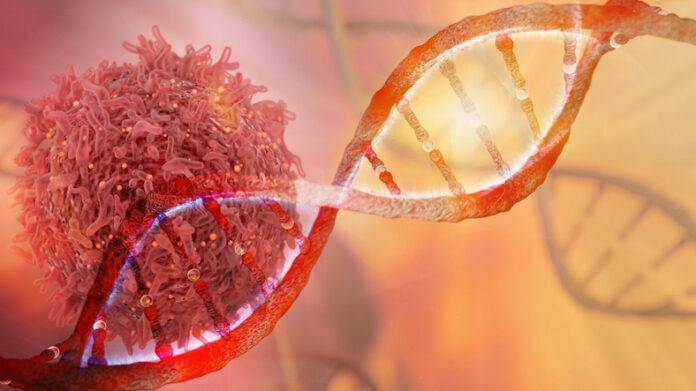
The p53 gene is perhaps the most-studied, master tumor suppressor gene in cancer biology. When it works well, it’s difficult for tumors to develop. But in half of all tumors, mutated p53 has been shut down by repressors. Despite decades of research into restoring normal therapeutically-capable p53 activity, reliable strategies have disappointed.
New research possibly explains why perhaps opening a window into a new therapeutic approach. Scientists from the University of Colorado have found that to do its job well, p53 relies on a partnership with another protein, FAM193A.
“We found that if a cell lacks FAM193A, p53 can’t do an effective knock-out punch, ” said Joaquin Espinosa, PhD, professor of pharmacology at the University of Colorado School of Medicine, and senior author of a paper in Cell Reports. “Before this, very little was known about this protein, certainly nothing to do with cancer biology.”
So how did the team discover this essential interaction between one of the best-studied cancer gene proteins and one that appears in less than ten published papers?
The investigators started with one of the Holy Grails in cancer research: how to restore p53 activity. For more than 20 years, researchers have known that the molecules MDM2 and MDM4 become overactive in cancer and repress p53 activity. Many companies developed MDM2/MDM4 inhibitors that seem to do the job well in cell studies. The inhibitors interfere with the binding of MDM2 and MDM4 with p53, thereby releasing the repressor’s grip. They look great in the laboratory but so far have not proved very effective as monotherapy in clinical trials.
In this work, the researchers chose a neuroblastoma cell line that they discovered was exquisitely sensitive to MDM2/4 inhibitors in the lab.
“We wanted to see what was happening in this cell line that made p53 work so well,” Espinosa said. The team screened the entire human genome using CRISPR technology to see which genes are required for full p53 activation. As a result, the screening identified the protein called FAM193A as a potent and widespread positive regulator of p53 activity. “We found this fascinating new p53 partner that is required for p53 to deliver its knockout punch,” added Espinosa. “Without FAM193A, p53 can only produce a weak punch.”
The team’s follow-up mechanistic studies revealed how the two partners interact. FAM193A forces the release of one of the two main p53 repressors—MDM4.
To be sure that this wasn’t just a phenomenon observed solely in the neuroblastoma cell line, the researchers studied two well-known large cancer data sets. They first analyzed the DepMap—formerly the Achilles project data set—developed at the Broad Institute, which provides information about gene co-dependencies in 1000 cell lines.
“There we saw a codependency between FAM193A and p53,” says Espinosa. “When the two genes worked together, they had the same impacts on the cell lines. FAM193 scored very high as a partner of p53.”
Next, they studied data from the Cancer Genome Atlas which includes tumors from nearly every tumor type. In a computational analysis, they grouped the cancers into those with high FAM193A levels and those with low levels.
“In many cancer types, but not all, we saw that tumors with high FAM193A levels had a better prognosis, the tumors grew slowly,” said Espinosa. But low or non-existent FAM193A levels meant lower p53 activity, and worse prognosis, including progression-free survival.
Added Espinosa, “All of that became a strong body of evidence to say FAM193A is a positive regulator of p53 activity with p53 being perhaps the most important tumor suppressor in cancer biology.”
Looking ahead, the team plans on studying how to understand the mechanism in more depth, including FAM193’s activity. Therapeutic strategies could include ways to strengthen the binding of FAM193 with MDM4 or even to coax cells into making more FAM193.













